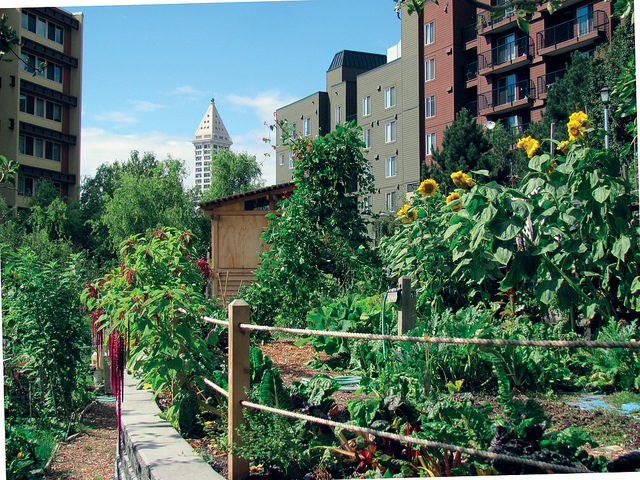Facts About City Blooming Revealed
4 Easy Facts About City Blooming Shown
Table of ContentsThe 7-Second Trick For City BloomingSee This Report on City BloomingFascination About City Blooming3 Simple Techniques For City BloomingThe Main Principles Of City Blooming
Fascinated in expanding food up for sale in the City of Chicago? Believing regarding beginning a neighborhood garden? Changes to the Chicago Zoning Ordinance permit agricultural uses like area gardens and urban ranches in lots of parts of the city. Below is a checklist of often asked questions concerning the regulations and guidelines that growers need to take into consideration when preparing an urban agriculture task.
The zoning change does not modify any kind of other codes managing composting, building permits, buying or renting City possessed residential property, business licenses or environmental contamination. There are existing codes that regulate these concerns and they remain in complete impact and may apply to your task. Neighborhood yards are usually possessed or managed by public entities, public companies or community-based organizations and preserved by volunteers.
Urban farms expand food that is planned to be sold, either on a not-for-profit or for-profit basis. Because of their business objective, urban farms need a service certificate. Yes. A community garden is enabled to market excess produce that was grown on website if the sales are accessory or secondary to the yard's key objective explained over.
The Greatest Guide To City Blooming
Composting is allowed however only for plant material that is created and used on site. The quantity of compost product can not go beyond 25 cubic lawns at any type of provided time according to the requirements in 7-28-715 of the City's Municipal Code. Yes. Since the soil at many brand-new yard sites needs modifying, garden compost, dirt, timber chips, or various other materials can be gotten to create or enhance the growing room - container and raised bed gardening etc..

If a structure license is called for after that the hoophouse will be taken into consideration an accessory structure. You can figure out more concerning the structure authorization demands by calling the Department of Structures. The 25,000-square-foot size restriction is intended to prevent a solitary community yard from dominating an offered block or interfering with the block's existing domestic or industrial personality.
The limit does not relate to gardens situated in Public Open Space (POS) districts. Can there be more than one neighborhood yard that is 25,000 square feet on a solitary block? Yes. The dimension limit uses to specific gardens, not to private blocks. No. Secure fencing is not needed, nevertheless, gardens that have large parking lot might be needed to set up fencing or various other landscape design features.
All About City Blooming
B1 & B2 areas call for that all business use activities be conducted inside your home. R areas limit industrial activity. The laws mirror the objective and intent of the Zoning Code. Is secure fencing needed for city ranches? Yes. Fencings might be needed, together with landscape design and screening, for specific vehicle parking areas and outside work or storage areas relying on area and the details task taking location.
Yes. Urban ranches need structure authorizations and zoning authorizations prior to construction. Other forms of city evaluation might be called for depending on details structures, tasks, size, landscape design, licensing, public health and stormwater administration concerns. Several of these needs are recognized in the job style or permitting process, nonetheless, the candidate may be responsible to independently identify particular licenses or allows that might be needed.
The Division of Service Matters and Customer Defense can help figure out the details kind of business permit that's required. Off road car park is needed for many industrial tasks in Chicago. The called for number of vehicle parking spaces is based on the number of employees working on website and not the square video of the expanding room.
The Of City Blooming

Yes. A metropolitan ranch can market compost material produced on site, nonetheless, the operation must adhere to the laws in 7-28-715 of the Chicago Municipal Code. Yes. Aquaponic systems are allowed indoors on urban farms in lots of zoning areas. A zoning evaluation and building permit is needed in order to set up structures or systems and a service permit is needed as explained above.
Up to 5 hives or nests of honey might be maintained as an accessory use. Nonetheless, beekeepers must register with the Illinois Division of Farming. For even more info about the recommended zoning modification you may speak to the Division of Real Estate and Economic Advancement, Bureau of Planning and Zoning at 312.744.8563.
, which takes place visit our website in country locations at the edge of suburbs.
The smart Trick of City Blooming That Nobody is Talking About
It can entail a motion of natural farmers, "foodies" and "locavores", who look for to form social media networks established on a shared values of nature and neighborhood holism. These networks can develop using formal institutional assistance, coming to be integrated right into local town as a "change town" movement for lasting urban growth.
In either situation, the extra straight access to fresh vegetable, fruit, and meat products that may be realised through metropolitan farming can improve food protection and food safety while lowering food miles, resulting in reduced greenhouse gas exhausts, therefore contributing to environment adjustment reduction. Several of the first evidence of urban farming comes from Mesopotamia.